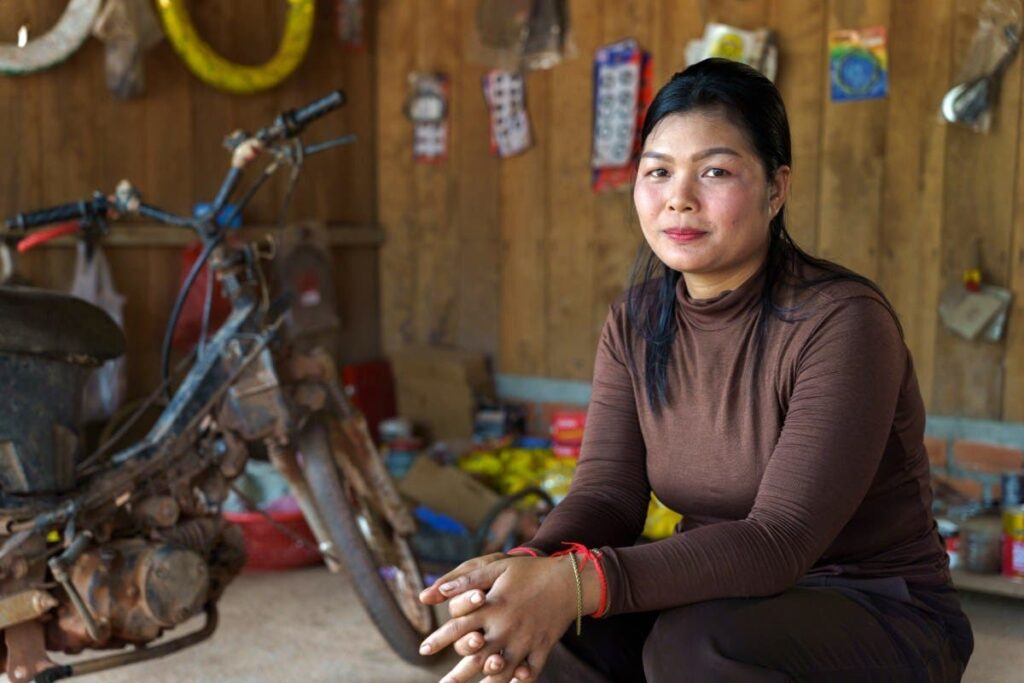Every three seconds, a girl is married before she turns 18. Twelve million girls every year are married as a child—12 million childhoods cut short.
This is what happened to Binita in Nepal. Married at 13 to a man 11 years her senior, Binita said that abuse is common in unions like hers. Stripped of their autonomy and opportunities, married girls are more likely to experience intimate partner violence. “She’s forced to stay, even if she’s beaten or unhappy,” said Binita, now 18.
Like Binita, girls around the world face significant risks when they marry as children. They are forced to engage in sexual intercourse before their bodies and minds are ready, often without access to contraception, knowledge about their bodies and rights, or reproductive health services. Too often, child marriage puts an end to girls’ education, with 87 percent of married adolescent girls out of school globally. This limits girls’ opportunities and their ability to shape their own futures.
In new research from Plan International, we spoke with 250 girls and young women around the world about what it means to marry as a child. Together, their stories help us understand why this harmful practice remains deeply woven into many communities.
Most of the girls we spoke with come from countries that have legislated against child marriage, yet—paradoxically—efforts to make child marriage illegal mean it is increasingly taking the form of informal unions. These unregistered relationships, where couples live together like spouses without legal recognition, leave girls with no protection, no custody rights, and no access to support if abuse occurs.
Our research also reveals that digital spaces are reshaping how child marriage happens. Social media is opening up new avenues for young people to form relationships outside of parental control. This can feel like self-determination for some girls but underneath the perceived choice can lie grooming and exploitation by much older men, which quickly transitions from online to real life.
At the same time, we heard stories of extraordinary strength and resilience. In Cambodia, Kanada was 17 when she learned that she was to be married. She was still in school, still a child, but her future had already been decided. Marriage at that age could have meant the end of her education, independence, and choice over her future.
But it wasn’t the end of her story. With support from Plan International, Kanada signed up for a motorcycle repair course—the only woman in the class. She defied stereotypes that the work wasn’t suited for women, ignored the doubters, and eventually opened her own garage. Today, she earns her own income, which gives her some independence, and she dreams of hiring other women. She firmly believes that girls can do the same jobs as boys.
Kanada’s story gives a glimpse of what becomes possible when girls are given choices beyond marriage. The lessons from Kanada’s experience, and from countless others like hers, are clear.
First, we must keep challenging the harmful beliefs that lead to child marriage being accepted as “normal.”
In many communities, it is justified as protection—of a girl’s honor, her family’s reputation, or her economic security. In truth, it is a violation of her rights. We must transform the beliefs that keep girls trapped, and men and boys must be part of reshaping them.
Second, girls need real alternatives.
The surest protection against child marriage is opportunities. Keeping girls in school, providing skills for work, and ensuring access to health care and contraception changes everything because a girl with choices is far less likely to marry early. But married girls also need to know their rights, and about ways to build their own futures. We need to make sure every girl—married or at risk—has access to education, training, health care, contraception, and someone she can turn to for help.
And third, laws must be enforced and close gaps.
There is a growing international consensus that a minimum age of 18 for marriage is critical to end child marriage, but loopholes and weak enforcement mean millions of girls remain unprotected. Child marriage therefore continues in the shadows. Informal unions, though often invisible to the law, must also be recognized as a form of child marriage and given equal attention, to protect every girl in practice, not just on paper.
Kanada’s garage is proof of what is possible when a girl gets to choose her own future. The question now is whether we will act with the urgency required to ensure every girl has that same freedom.
Reena Ghelani is CEO of Plan International.
The views expressed in this article are the writer’s own.
Read the full article here
